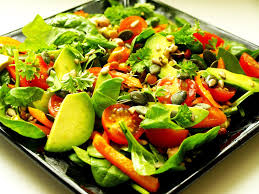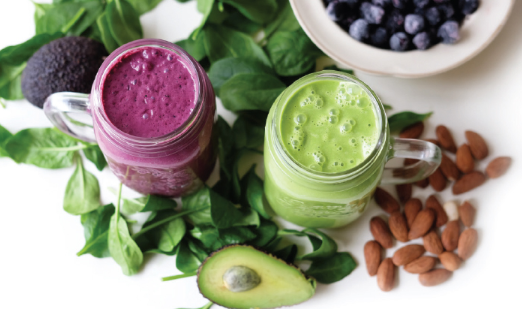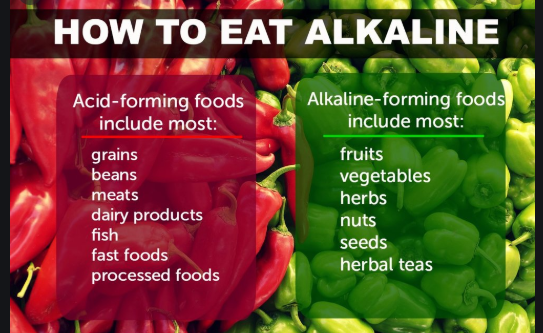What Is PH Balance?
When looking at our bodies, there are many factors that make cells and tissues work properly, such as hydration, temperature, availability of nutrients, and pH. The pH stands for “potential of hydrogen” and is a measurement of hydrogen ions in a particular solution – the more ions, the more acidic the solution, and vice versa.
But why is this so important? Our bodies are designed to operate within a very narrow pH range, which is around 7.365, which is slightly alkaline. The pH scale ranges from 0 to 14. A pH of higher than 7 is alkalizing, a pH less than 7 is acidic, and a pH of 7 is considered neutral.

Our blood is the most important, and therefore most protected pH measurement. Even a minor fluctuation in our blood’s pH creates distress signals. The blood pH basically never shifts very much – a pH level of 6 would already mean we’re in a coma.
So in order for blood to effectively act as a medium of oxygen and other vital nutrients, the pH needs to be close to this specific range. This slightly alkaline balance is maintained and ensured by the work of our kidneys. They filter out any excessive acids in our system and excrete them in the urine. Our bodies contain alkaline reserves and will fight to re-balance any deviations of fluctuating levels.
When we eat too many acid-forming foods, the kidneys can’t always keep up with the acid waste and they start accumulating it in our tissues.
Studies have shown that if this acidic overload happens over a longer period of time, it can lead to various health conditions, including kidney stones, muscle degradation, reduced bone density, and even arthritis, diabetes, and cancer. All of these can be traced back in some way to an acidic inner terrain.
Alkaline vs. Acidic
A 2014 study, published in the European journal Diabetologia, involved tracking more than 66,000 women over the course of 14 years. Compared to women who ate an alkaline diet, participants who consumed high-acid diets showed a significant increase in developing type 2 diabetes over the course of the study, according to the results. An acid-forming diet with low vegetable intake is also linked to an increased risk of metabolic syndrome.
This is very damaging and impairs the body’s ability to repair or detoxify and will cause a person to be more susceptible to disease and illness. The most common signs of acidosis are:
- Fatigue or chronic fatigue
- Feeling tired, low energy
- Brittle nails and hair
- Low bone density, osteoporosis
- Heavy breathing
- Gaining weight or being underweight
- Digestive issues
- Arthritis, diabetes
- Headaches, acne
- Bad immune system
- Infections, allergies, candida
- Heart problems, cancer
It is a lot of hard work for the body to detoxify and neutralize acids before they act as poisons in and around the cells, ultimately changing their whole environment. Actually, most people in the US and Europe, where diseases like those mentioned above have become an epidemic, are too acidic.
But it’s not just the food we eat that can cause an acidic environment. Our body creates acid by using muscles, breathing, and digesting certain foods. Other factors can be stress, toxins, a polluted environment, tobacco, lack of sleep, or medications.
If you want to know whether you’re more on the alkaline or acidic side, you can easily test that at home. Simply get some test stripes at your health food store or online which you can use for either your saliva or urine to show you the results.
Literally billions of cells in your tissues rely on an alkaline environment to function properly, prevent cellular damage and fend off pathogenic microbes. So what happens when you eat an alkaline diet?

Benefits of an Alkaline Diet
- Deeper more restful sleep
- Reduction of candida overgrowth
- Increased mental acuity or alertness
- Enhanced memory and cognition
- Easier weight loss
- Increased energy
- Better bone health
- Reduced muscle wasting
- Proper cell functioning
- Healthy tissues
- Mitigation of chronic diseases
- Improved cardiovascular health
It seems like following the guidelines of eating alkaline is just another way of finding out that whole plant-based foods are most beneficial to us. Not only are they not harmful to us, their high mineral and vitamin content also has a hugely positive effect on our whole body, such as healing and preventing disease. But let’s first take a look at alkaline foods.
What Are Alkaline Foods?
To explain the most common misconception: the acid/alkaline load of a given food refers not to the pH of the food prior to consumption but to the acid/alkaline result after you digest it. Our kidneys have to neutralize the acid that’s produced in the process of digestion.
This is sometimes referred to as “potential renal acid load” or PRAL (It measures how much acid your kidneys need to process after a food has been eaten.) This means we can give foods a certain PRAL score in order to determine how alkaline or acidic forming they are.

It’s been shown that when you eat foods with a high PRAL, the pH of your urine and saliva often becomes lower or more acidic. Whereas foods with a low PRAL raise your urine and saliva pH, making it more alkaline. Though this isn’t a perfect measurement, it can give a useful general guideline as to how food is affecting your body.
Whether a portion of food is alkalizing or acidifying is based on the amount of acid waste that is produced when it is digested.
Our body is affected by these waste chemicals, not the actual acidity of a food. Though we do have our own system to maintain alkalinity, we do need to support it in order to work properly and stay healthy.
Most individuals in the Western world do not eat diets that are alkalizing, instead, they eat deadly diets high in animal products, refined foods, and processed foods. Diets containing these foods can produce about 100mEq of acid per day – this amount of acid is nearly twice what the body can handle.
Without alkalizing, the body needs to take vital minerals in order to neutralize the acid. One of the biggest differences you can recognize is when you move around or work out a lot, your recovery time will be much shorter due to a more alkaline environment in your body.
Though there is still no clear scientific consensus, we could find an overall tendency of plant-based foods being more or even highly alkalizing, while meat and dairy, as well as processed foods, are a lot more acidic.
How to Alkalize Your Body
This doesn’t mean that all we should eat are alkalizing foods. It’s very commonly advised to opt for a balance of 80% alkaline-forming food and 20% acidic-forming food. You can take a look below and choose from the lists – just remember to keep acid-forming foods to a minimum.
Alkalizing Foods
- All Vegetables, especially when Green and Raw
- All Fruits like Melon, Apple, Berries, Grapes, Lemon. Some are slightly acidic, like Blueberries, Cranberries, and Plums.
- Leafy Greens like Spinach or Lettuce, Cruciferous Vegetables like Broccoli, Kale
- Pumpkin, Potatoes, Sweet Potatoes, Beets
- Mushrooms, Sprouts, Legumes
- Nuts & Seeds like Coconut, Almonds, Chia, Sesame
- Onions, Garlic, Leek and Herbs/Spices like Parsley, Ginger
- Wheat and Barley Grass, Algae like Spirulina and Chlorella
- Grains like Amaranth, Millet & Quinoa
- Fresh Beans, Green Peas, Lima Beans, Soy Products
Acidic Foods
- Meat, fish, shellfish
- Milk, eggs, butter, cheese
- Coffee, soda, alcohol
- Processed and refined food
- Sugar, artificial sweeteners, refined grains
- Tobacco, preservatives
- MSG, canned food
You might notice that our grocery stores and restaurants are made up almost exclusively of acid-forming foods. They are highly palatable and have addictive properties, which makes it easy to overeat on them. We usually grow up getting accustomed to meals like hot dogs and ice cream, therefore overloading our bodies with disease-causing ingredients.
For a thorough list of how alkaline or acid-forming certain foods are, check out our infographic below this post.
How to Start Eating Alkaline Today

In order to make this approach to eating a balanced diet more actionable and easier for you, we’ve come up with some general guidelines that are helpful if you want to eat a more alkaline diet.
1. Drink a lot of water to flush your system and support natural detoxification. Extra points if you add lemon to it – remember that acid tasting food doesn’t automatically mean it’s also acid-forming! After waking up, drink a huge glass of water. For more alkaline effects, add some apple cider vinegar to it.
2. Combine alkaline foods in a meal with foods that are acidic to create a good balance and focus on foods that are high in potassium like lemons or bananas.
3. Choose fresh, organic, GMO-free food whenever possible. Also, look out for minerals to help your body neutralize acid wastes (organic foods have a higher nutritional content).
4. Stay as close to the natural state of food as possible, meaning eat it raw or steamed as opposed to frying it.
5. Make salads a staple in your meal plan. Leafy greens are the most alkaline foods and also rich in vital micronutrients. Use spinach or kale for best results, the darker the better.
6. Foods like whole grains or some legumes are not alkaline-forming, but also offer nutritional benefits and are a part of a healthy diet – so you should eat them along with your alkaline foods. These are grains like oats, millet, spelled, or buckwheat as well as beans and lentils.
7. Replace animal foods with vegetable sources of protein, such as tofu, beans, or broccoli. These are a lot more alkaline-forming.
8. Incorporate more fruits and veggies into your diet by snacking on them, making fresh smoothies or green juices.
9. Try to eat some carrots, cauliflower, broccoli, eggplant, cucumber, potatoes, or celery every day. Soak and sprout your nuts and grains for more alkalinity.
Other Ways to Alkalize Your Body
As mentioned above, our food choices are not be-all and end-all. Just like there are other factors that can cause acidosis, there are also other ways of shifting yourself back towards alkalinity. So if you want to further support this process, here’s what you can do.
- Eat slowly and chew every bite around 30-40 times. Be careful not to overeat and overload your system.
- Make meditation a habit & do some deep breathinStrengthen the Immune System with Alkaline Foods exercises to reduce stress.
- Throw away your chemical-filled shampoos, cleaning products, or air fresheners. Try to find and use natural products instead with only minimal ingredients.
- Go for a walk or work out, since it helps to move acidic waste products in order for your body to better eliminate them. Extra points for getting some sunshine.
- Baking soda can also help neutralize the acid and help the body to maintain pH balance in the urine and bloodstream. It is also very useful for relieving heartburn or acid indigestion.





cuan123
29 Dec 2022My brother recommended I might like this web site.
He was entirely right. This post truly made my day. You
cann’t imagine simply how much time I had spent for this information! Thanks!